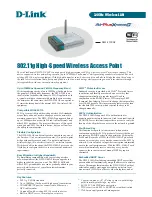
LOHU 2425PX
User Manual
----------------------------------------------------------------------------------------------------------
-----------------------------------------------------------------------------------------------------------------------------------------------------------------------------------------------------------------
Voltlaan 408 – 2681 TV Monster – Netherlands
Tel : +31208080743
Email : [email protected]
Website : www.lohuisnetworks.com
International Numbers:
Dubai :
United States:
United Kingdom:
France :
Italy:
Japan:
Argentina:
Brazil :
Pakistan:
+97142280111
+12123812983
+442033557669
+33170612716
+390662207084
+81345506867
+541152391407
+552135219853
+92217019804
-
36
-
Chapter 8. Troubleshooting
This chapter helps you to isolate and solve common problems that may arise during setup.
Before you start troubleshooting, it is important that you have checked the details in the product
user manual and quick installation guide.
In some cases, rebooting the unit clears the problem. If the radio still doesn’t perform as expected,
please try the following options.
9-1 General Descriptions
To successfully use the radios, engineers must be able to troubleshoot the system
effectively. This section will show you how a LOHU Series Radio could be analyzed
when you are experiencing link problems. The four main reasons that a link may not
work are list as below:
Configuration
Path issues (such as distance, obstacles, RF reflection…)
Personal reasons (careless mounting or the incorrectly connection.)
Hardware (includes the radio, cable and connectors, etc. In few cases, the radio will
conflict with the laptop or PC)
Environment (anything that is outside the equipment and not part of the path
itself) If you verify that your configuration is correct, but the user still report that the
link does not work, the most likely, the problem is environmental interference or an
improper connection. Assuming that the testing method, cabling, antennas, and
antenna alignment have been checked (always ensure this before checking the
environment),
then you can do the follow to check the environment.
General Check
Two general checks are recommended before taking any action:
Check whether the software versions at both ends of the link are up-to-date.
Check for any reported alarm messages in the radio’s Event Log
Analyzing the Spectrum
The best way to discover if there is a source of interference is to use a spectrum
analyzer. By turning the antenna 360 degrees, you can find out which direction is the
interference coming from. It will also show the frequencies and the level of signal
detected.
Avoiding Interference
When a source of interference is identified and when the level and frequencies are
known, the next step is to avoid the interference. Some of the following actions can be
performed:
Switch the RF channel away from the interference source.
Change the polarization of the antenna; try to change to a polarization different
from the incoming interference.



































